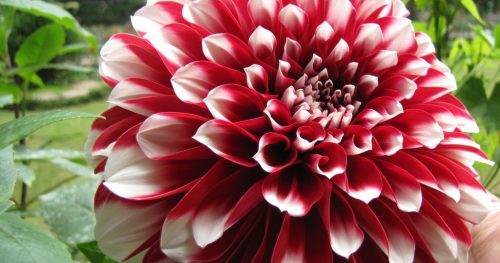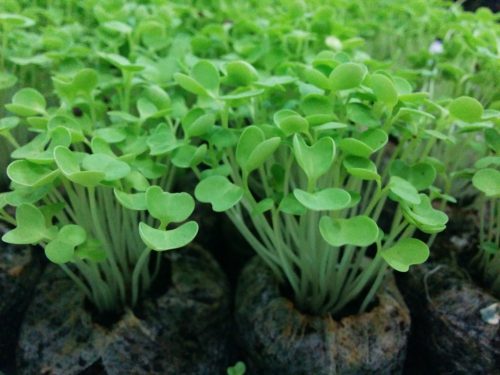TBI Blogs: Top 10 Gardening Mistakes Beginners Make and How to Avoid Them
Wish you had a green thumb? Learn from these common gardening mistakes and grow plants like an expert!

Learning from other’s mistakes is always a good thing and gardening is no exception. Presented here are the top 10 gardening mistakes beginners make.
Gardening is a nice hobby and in today’s context, it works as a stress-reliever and an anti-depressant. Many take up the hobby of urban gardening but very few continue with it. One of the many reasons people don’t continue is the lack of success they encounter in their gardening journey.
Mistakes are inevitable when we start something new and gardening is no exception. Below is a list of common gardening mistakes new gardeners make. It is shared here with the hope that others will benefit from it.
Remember, people with green thumbs are those who have made many mistakes.
1. Giving plants too little or too much light

Image source: geekgardener
This is the number one gardening mistake many make during the start of their gardening journey. There are a couple of reasons why this happens; either people don’t know how much light a plant needs, or they simply don’t have a place that gets good light. Either case results in plants not getting the light required and thus, failing to grow.
For those living in bustling cities, finding the right place to grow a garden can be quite a challenge. One is often tempted to buy the plants that look beautiful in the plant nursery, without much consideration for whether they will be suitable in our rooftop or balcony gardens.
Different plants have different light requirements and one can easily choose the right location for them if we remember a few basic rules.
Most of the plants that flower annually need a full day’s sun or, at the very least, 4 to 6 hours of direct sunlight.
When in a nursery, observing where the plants have been placed will give you a clue as to how much light they require. If placed in a sunny spot in the nursery, do the same in your garden; and vice-versa. It’s that simple!
South-facing balconies receive the maximum light, in terms of duration of time and intensity. Next come east and west-facing balconies. North-facing balconies receive the least light for the most part of the year.
If you are growing vegetables, the best option is to grow in them in south, east or west facing balconies.
2. Watering the plants

Image source: pexels.com
This has to be the most common mistake made while growing plants. Many of us simply over water the plants, without knowing how much water the plant requires.
For plants that are planted in the ground, water them well so that the soil is completely wet. For container grown plants, water the plants till you see some water draining from the drainage holes provided in the container.
All containers used for potting the plants must have a drainage hole to ensure proper drainage. Water should not stagnate near the roots as stagnant water can deprive roots of oxygen and cause them to rot.
Another important mistake is not watering the plants when you are traveling. In your absence, plants can be watered using automated drip irrigation systems. One can even improvise a slow drip system out of a pet bottle by making a hole at the bottom of the bottle.
3. Feeding the plants
Many beginners assume that plants only need water to grow and bloom. That is not true. Plants do need water, but they also need about 16 different nutrient elements from the soil. As a gardener, it is our responsibility to feed the plants regularly to keep them growing well. You might be wondering “What do I feed my plants and how often ?”
There are different types of plant fertilizers available. The easiest to find is compost. Compost is usually decomposed cow manure. It is organic and eco-friendly. Adding a handful of compost to every pot, once every 15 days, will ensure that your plant stays healthy.
Moderation is key when it comes to fertilizer application. Applying more will not result in a better plant. Many plants die due to the use of excessive fertilizer.
4. Crowding the plants

Knowing the right amount of space to keep between plants determines the success or failure of a gardening project. This usually happens when budding gardeners start growing plants from seeds.
While sowing seeds, one should consider the space that a grown plant will need. If too many seeds are sown in a container or a pot, they should be reduced to just 1 or 2 based on the size of the container. This process of removing the excess seeds is called ‘thinning.’ Allowing all the plants to grow in a cramped pot will cause deficiencies in the plants and none of them will grow to their full size.
5. Not sowing seeds at the right depth
Most vegetables or annual flowering plants are grown using seeds. Sowing of seeds always makes new gardeners worry. The biggest question is how deep the seeds have to be sown and how far apart. The thumb rule is, the seeds should be sown twice as deep as they are thick. For example, if the seeds are 5mm thick, sow them 10mm deep. If the seeds are too tiny, simply sprinkle them on the top. Refer to a sowing chart for more details.
6. Size of container
It can sometimes be tricky to figure out the right container size for plants. Very often, we end up sowing the seeds for a big plant in a small container. This is where regular re-potting comes into the picture.
Inspect the pot every month or so, to see if there are roots showing up on the soil surface or via the drainage holes in the bottom. If you see roots peeping out, then it is time to move the plant to a bigger pot. Ask for the right size of the container in the nursery where you buy the plant from.
7. Letting weeds take over.
A garden is not only for the seeds we sow, sometimes we get uninvited guests in the form of weeds and it is important to be able to tell the difference between the two. Before sowing the seeds for a plant, it is a good idea to read up about it and learn more about it.
Removal of weeds has to be done as early as possible. Leaving the weed to grow in the container will result in the nutrients being eaten away by the unwanted plant. Scout around your garden every day morning and look for weeds.
8. Leaving the plants to the pests

Pests are every gardener’s nightmare. As gardeners, we love healthy plants and so do pests. By carefully inspecting the plants every morning, we can detect the pests sooner and get rid of them. Bugs, insects and caterpillars can be easily controlled when they are identified during their early stages.
Spraying the plants with organic pesticides such as neem oil, will ensure the pests don’t attack the plants in future.
9. Planting out-of-season plants
Planting plants that are out-of-season and expecting flowers/fruits will often result in disappointment. This applies to plants that are non-native as well. All of us get excited when we see an exotic vegetable and we immediately try to start growing it. While most of them will flourish, there are chances that some may not grow well as the environment conditions are totally different. Reading up about the plant before planting it will help set our expectations right.
10. Emotional meltdowns.
Last but not the least, emotional meltdowns. For most of us, gardening is a stress-busting activity and the garden is a place to relax. Sometimes, it is easy to get too attached to our plants. You might whistle around when the plant flowers; you might be in tears when the seeds don’t germinate. No matter what, your garden doesn’t fail to bring changes every day and keep us hoping for a bountiful harvest.
If you liked this article, feel free to visit Geekgardener for more such articles or Visit our Facebook page.
Like this story? Or have something to share? Write to us:
[email protected], or connect with us on Facebook and Twitter
(@thebetterindia).
This story made me
- 97
- 121
- 89
- 167
Tell Us More
We bring stories straight from the heart of India, to inspire millions and create a wave of impact. Our positive movement is growing bigger everyday, and we would love for you to join it.
Please contribute whatever you can, every little penny helps our team in bringing you more stories that support dreams and spread hope.



















